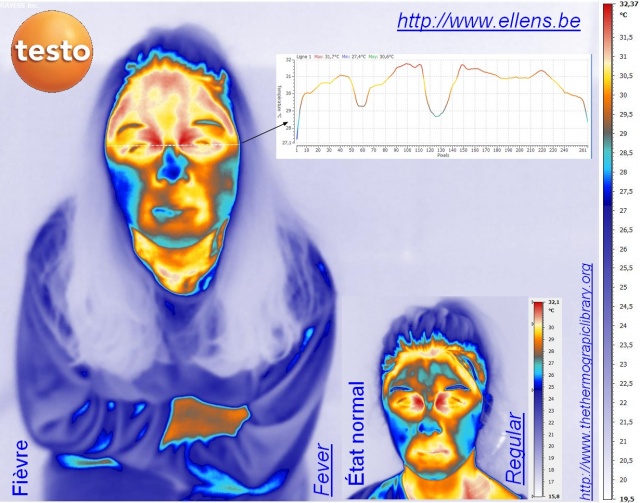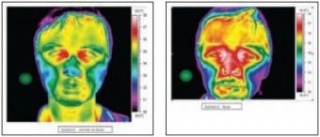Affichages
Medical infrared thermography of fever
Fever, also known as pyrexia and febrile response, is defined as having a temperature above the normal range due to an increase in the body's temperature set-point. There is not a single agreed-upon upper limit for normal temperature with sources using values between 37.5 and 38.3 °C (99.5 and 100.9 °F). The increase in set-point triggers increased muscle contraction and causes a feeling of cold. This results in greater heat production and efforts to conserve heat. When the set-point temperature returns to normal a person feels hot, becomes flushed, and may begin to sweat. Rarely a fever may trigger a febrile seizure. This is more common in young children. Fevers do not typically go higher than 41 to 42 °C (105.8 to 107.6 °F).
The advantage of thermography is here to give a global mapping of the thermal situation of the fever.
Source: Wikipedia
The upper thermography has the advantage to present the same young girl with fever and his usual mood, without fever.
We have choosen here to search for thermal signature research and not into the same thermal range but doing the exercise below:
Same situation in lower format and with a link to an article about use of thermography in fever detection at borders for example.
Complete text (en): Imaging at fever pitch
Higher format of the upper thermal image: Royal Photographic Society
Français: Fièvre
Nederlands: Koorts


